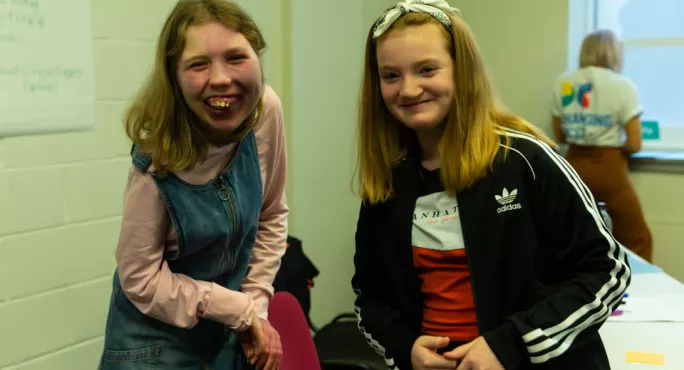Some 86,000 children of school age across the UK have a visible difference such as a mark, scar or condition that affects their appearance. Unfortunately, our charity’s research shows that almost half of children with a visible difference are bullied at school. That’s why we know it’s so important to raise awareness from an early age about “looking different” and work closely with schools.
At the start of our school workshops we will often ask the question: “Do you think life could be more difficult for someone who looks different?” It is unusual for many hands to go up, but the reality is that life can be very difficult for many children with a visible difference.
David is 11 years old and part of our Youth Action Programme (YAG) that gives a voice to young people with a visible difference. He has a condition that means his skin constantly blisters and is very sore.
Quick read: Anti-bullying work should never stop, teachers told
Long read: How one Scottish school transformed its approach to bullying
Empathy: Why pupils need empathy more than ever
Mental health: Number of teenage mental health detentions hit new high
“The other children called me names such as ‘cornflakes, scabby, snowflake and flaky,’” he says.
“In activities like dance lessons no one would hold my hand. People used to treat me differently until I was so sad I would not go to school.
“So the teachers told my class all about me and my condition and let them see and touch my creams. When I came back everyone knew all about me and I felt a lot better about myself.”
Support can be lifechanging
Our independent research with Childwise found that less than a third of children and young people said they would be friends with someone who looked different. Yet we know that when children and teachers talk about looking different and support their classmates and pupils then this can be lifechanging.
Our workshops and assemblies aim to support the whole school. We educate children on the reasons why people can look different and promote empathy and understanding through activities and practical tips. Last year we spoke to 3,000 children in schools across Scotland and, after those sessions, over 90 per cent told us they would now know how to behave if they met someone who looked different.
As the UK’s leading charity for people with a visible difference, we know how important it is that teachers have access to advice and guidance to help them support their classes to recognise and challenge appearance-related stereotypes. We hear from many teachers that they don’t talk about the issue of looking different because they don’t want to get it wrong and simply don’t know how to start the conversation with their class.
We find that transition to high school can also be a difficult time for young people with a visible difference.
One of our YAG members, Hannah, said: “In high school you have to fit in, you have to look the same, and if you don’t then people will make a fuss…I once heard a person had been saying stuff behind my back, calling me ‘a purple monster’, and asking one of my friends, ‘why are you hanging out with that purple monster?’. In PE I am always the last person to get picked for teams.”
Here is advice for teachers from young people with a visible difference:
- Get to know your pupils and how best to support them.
- Don’t make assumptions - always ask or check.
- Treat pupils as individuals and see beyond the visible difference.
- Talk about visible difference respectfully and appropriately.
- Set an example, including apologising if you get things wrong.
- Challenge appearance-related myths and stereotypes.
- Talk to and work with our parents.
We want all schools to include lessons and talks on visible difference in their curriculum and equality and diversity agendas. We know that when we get it right it can be truly transformative.
For more information and school activities, please go to our website.
Luisa Brown is youth engagement officer for the Changing Faces charity, based in Edinburgh. She tweets @luisabrown_YW

